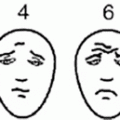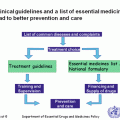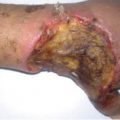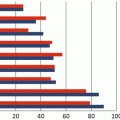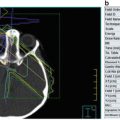Pathology classification
Clinical features
Classical Hodgkin lymphoma
Nodular sclerosis
RS cells set in a background of reactive lymphocytes, eosinophils, and plasma cells with varying degrees of collagen fibrosis/sclerosis
Most frequent in adolescent and young adult
Slight female predominance
Mediastinal involvement (80 %)
Mixed cellularity
RS cells admixed with numerous inflammatory cells including lymphocytes, histiocytes, eosinophils, and plasma cells without sclerosis
EBV association (75 %)
Male predominant
Young age
Peripheral lymph node involvement
Advanced stage
Lymphocyte-rich
Few RS cells. Many B cells. Fine sclerosis
Rare
Localized stages
Good prognostic
Lymphocyte-depleted
Pleomorphic RS cells with only few reactive lymphocytes
Rare
Advanced stages (bone marrow, retroperitoneal, and abdominal organ involvement)
Sometime HIV-associated
Nodular lymphocyte predominant Hodgkin lymphoma
Very rare
Young age
Good prognostic
Immunophenotyping is recommended as a routine diagnostic tool. In LMIC where this technique is not available for all patients, it should be done when clinical and/or pathological morphological findings are not clearly consistent with HL. The most common phenotype of HRS cells is expression of CD30 and CD15 and negativity of CD45. CD30 is the most frankly expressed marker but is not specific as it may also be expressed in anaplastic large cell lymphoma; CD15 is less frequently and less intensely expressed. EBV marker LMP1 may also be helpful in establishing the diagnosis [7].
Staging and Response Evaluation
Staging of Hodgkin lymphoma is performed according to the Ann Arbor staging classification as detailed in Table 18.2 [8]. It is desirable to carefully document signs and symptoms at presentation as well as all sites of involvement at diagnosis in order to better follow up response to therapy. Furthermore, a proper staging is important in determining adequate risk category of the patient to help decide on the appropriate management. Table 18.3 lists all evaluations for presenting new patients. A thorough medical history focusing on unexplained fevers, drenching night sweats, or more than 10 % unintentional weight loss in the last 6 months will confirm the presence of B symptoms, an important prognostic factor and indicator of more advanced disease. In countries with prevalent malnutrition and endemic malaria, these symptoms may often be difficult to attribute to the lymphoma versus general health conditions, but given the often late presentation and bulk of the disease, it is best to err on the side of caution and attribute them to the lymphoma. Signs of superior vena cava syndrome (dyspnea, facial swelling, cough, orthopnea, and headache) or of tracheal and/or bronchial compression (cough, dyspnea, and orthopnea) should immediately alert the medical practitioner of a possible large mediastinal mass and prompt a chest radiograph for evaluation. Careful physical examination of all peripheral lymph node groups, documenting site and size, as well as evaluation for hepatosplenomegaly should be part of the initial staging work-up. While laboratory tests are desirable to determine adequate organ function prior to starting therapy, and can also contribute to inform on the prognosis, these are not required for risk classification and unavailability should not be an obstacle to therapy. In regard to diagnostic imaging, chest radiographs can inform about bulk of a chest mass (mediastinal to thoracic ratio greater than 33 %), as well as the presence of obvious pulmonary nodules. When CT or MRI is not available for a full anatomic localization of disease, an abdominal ultrasound can be used to evaluate infradiaphragmatic disease like liver and spleen involvement as well as inform about para-aortic and iliac nodal involvement. Currently, the gold standard as far as functional imaging is the 18Fluoro-deoxyglucose positron emission tomography (PET scan) which can reveal metabolic activity in involved nodal groups and extralymphatic organs, as well as indicate bone and bone marrow involvement. In the absence of this modality, a 99Technetium bone scan can be performed in patients with suspected bony disease due to localized pain or elevated alkaline phosphatase; however, a localized skeletal radiograph of the involved bones showing destruction will also suffice. Bone marrow biopsies are painful and expensive, so that unless the information gained by this procedure will change the patient’s therapy, it shall be omitted [9].
Stage | |
|---|---|
I | Involvement of a single lymph node region or lymphoid structure, e.g., spleen, thymus, or Waldeyer’s ring |
II | Involvement of two or more lymph node regions on the same side of the diaphragm |
III | Involvement of lymph node regions on both sides of the diaphragm (III), which may be accompanied by involvement of the spleen (IIIS) |
IV | Diffuse or disseminated involvement of one or more extranodal organs or tissues, with or without associated lymph node involvement |
Symptoms | |
A | Absence of B symptoms |
B | Fever (temperature >38 °C), drenching night sweats, unexplained loss of >10 % of body weight within the preceding 6 months |
Disease bulk and extension | |
X | Bulky disease (a widening of the mediastinum by more than one-third or the presence of a nodal mass with a maximal dimension >6 cm) |
E | Involvement of a single extranodal site that is contiguous from a known nodal site |
Table 18.3
Diagnostic evaluation for newly diagnosed Hodgkin lymphoma
Diagnostic evaluation | Important elements | Comments |
|---|---|---|
Medical history | “B” symptoms | Unexplained fever with temperatures above 38.0 °C orally, unexplained weight loss ≥10 % within 6 months preceding diagnosis, and drenching night sweats |
Symptoms of a mediastinal mass | Superior vena cava syndrome: dyspnea, facial swelling, cough, orthopena, and headache | |
Tracheal or bronchial compression: cough, dyspnea, and orthopnea | ||
Physical examination | Lymph nodes | Location and size of all abnormal lymph nodes should be documented |
Tonsils | Symmetry, size, and nodular infiltration | |
Lung auscultation | Stridor is heard when tracheal compression is significant and wheezing when smaller airways are compressed by hilar lymphadenopathy | |
Liver and spleen | Hepatomegaly splenomegaly is common, even if the spleen does not have macroscopic lymphoma infiltration | |
Blood pressure and cardiac auscultation | A friction rub indicates pericardial effusion; pulsus paradoxus implies cardiac tamponade | |
Laboratory tests | Complete blood count | Anemia and leukocytosis have been associated with a poor prognosis |
Biochemistry profile | Lactate dehydrogenase and low albumin have been associated with a poor prognosis. Creatinine and bilirubin measurement are necessary prior to chemotherapy administration to determine whether dose adjustments are needed. Elevated alkaline phosphatase is associated with bone involvement, and a bone scan or skeletal survey is warranted if it is significantly elevated | |
Erythrocyte sedimentation rate, C-reactive protein | Elevation of these and other markers of inflammation have been associated with a poor prognosis and can be followed for response | |
Diagnostic imaging, anatomic | Chest radiograph | To determine mediastinal to thoracic ratio and evaluate tracheal compression, look for obvious pulmonary nodules |
Skeletal survey | To evaluate suspected sites of bony involvement for patients with localized symptoms and/or elevated alkaline phosphatase | |
US abdomen and pelvis | Useful to assess infradiaphragmatic disease when CT or MRI is not available | |
CT of neck, chest | Lymph node size and location, and to evaluate for pulmonary involvement and extranodal extension | |
CT or MRI of abdomen, and pelvis | Lymph node size and location, lymphomatous involvement of the spleen and/or liver | |
Diagnostic imaging, functional | Gallium-67 scintigraphy | Metabolic activity of involved nodes and organs. Lower sensitivity than PET, but helpful in assessing response in residual masses |
99T bone scintigraphy | Useful to detect bone lesions in patients with an elevated alkaline phosphatase when PET/CT is not available | |
18FDG-PET | Metabolic activity of involved nodes and organs. Requires expertise due to high sensitivity but low specificity | |
Biopsy | Lymph node | Excisional, not fine needle, in order to confirm the diagnosis prior to initiation of therapy |
Bone marrow | In patients that are not already high risk and in whom involvement would change risk assignment and therapy |
Response assessment after the first two cycles of therapy should include the same modalities utilized at the time of diagnosis and should be performed according to the guidelines of the adopted treatment regimen. At the off-therapy evaluation all extranodal disease should have disappeared; most lymph nodes will have returned to a normal size (≤1 cm) and be soft and mobile. In case of nodular sclerosing HL, a large mediastinal mass may not have completely involuted at the end of therapy, given the nature of the pathology, but should be followed by regular chest radiographs to make sure it continues to regress over time. Frequent imaging is not required for follow-up; careful physical examination and evaluation will be more informative in raising concern of relapse [10].
Frontline Therapy
As previously discussed in the staging section a correct risk classification is very important when selecting the right treatment approach. Every protocol or treatment guideline will have its own risk classification so that the medical practitioner choosing a treatment approach needs to carefully review the risk definitions prior to deciding on therapy (Tables 18.4 and 18.5). In most places the choice of regimen (Table 18.6) will be dictated by drug availability and the experience of the treating physician, as well as supportive care resources. As has recently and dramatically been shown, drug substitutions need to be carefully evaluated [11]. In Central America, AHOPCA (Central American Association of Pediatric Hematology-Oncology), a modified Stanford V regimen, was used for high risk patients in whom they substituted mechlorethamine by cyclophosphamide given that the former was not available. The disappointing result of only 55 % 3-year event-free survival was originally attributed to the bulky and advanced stages at presentation [12]; however, this may not be a sufficient explanation, as the same substitution carried out by the St Jude-Stanford-Dana-Farber consortium during a National shortage also led to poorer outcomes [11]. It is therefore best to choose a proven regimen that utilizes available drugs than to assume one can substitute an unavailable drug. The choice of whether or not to choose a regimen that includes radiotherapy will be determined by the available infrastructure, but also the experience and willingness of often adult radiation oncologists in treating children.
Table 18.4
Treatment results for pediatric Hodgkin lymphoma of chemotherapy only trials in middle and low income countries
Chemotherapy | Stage | Outcome (years) | ||||||||
|---|---|---|---|---|---|---|---|---|---|---|
No. of patients | Event-free survival | Disease-free survival | Overall Survival | |||||||
AHOPCA [24] | ||||||||||
6 COPP | I, IIA, IIIA  | 216 | 63 (5) | – | – | |||||
8 COPP/ABV | IIB, IIIB, IV | 60 (5) | – | – | ||||||
Argentina (GATLA) [25] | ||||||||||
3 CVPP | IA, IIA | 10 | 86 (7) | – | – | |||||
6 CVPP | IB, IIB | 16 | 87 (7) | – | – | |||||
Chennai, India [26] | ||||||||||
6 COPP/ABV | All stages | 129 | – | 87 (5) | 93 (5) | |||||
Egypt [27] | ||||||||||
8 OAP | All stages | 60 | – | 53 (6) | 60 (6) | |||||
8 COMP | All stages | 59 | – | 70 (6) | 76 (6) | |||||
Jordan [28] | ||||||||||
4–6 MOPP | I, II | 14  | 92 (3) | –  100 (3) | ||||||
6–8 MOPP | III, IV | 16 | ||||||||
Nicaragua [29] | ||||||||||
6 COPP | I, IIA | 14 | 100 (3) | – | 100 (3) | |||||
8–10 COPP/ABV | IIB, III, IV | 34 | 75 (3) | – | – | |||||
Madras, India [30] | ||||||||||
6 COPP/ABV | I–IIA | 10 | 89 (5) | – | – | |||||
6 COPP/ABV | IIB–IVB | 43 | 90 (5) | – | – | |||||
Mali (GFAOP) [31] | ||||||||||
4–6 COPP/ABV | I, IIA | 0 | – | – | – | |||||
6–10 COPP/ABV | IIB, III, IV | 7 | – | – | 5/7 alive | |||||
New Delhi, India [32] | ||||||||||
6 COPP | All stages | 34 | – | 80 (5) | – | |||||
New Delhi, India [33] | ||||||||||
8 COPP/ABVD | All stages | 148 | 88 (5) | – | 92 (5) | |||||
Saudi Arabia [34] 4–6 ABVD MOPP | All stages All stages | 35  20 | 81 (5) | – | 86 (5) | |||||
Uganda [35] | ||||||||||
6 MOPP | I–IIIA | 38 | – | 75 (5) | – | |||||
6 MOPP | IIIB–IV | 10 | – | 60 (5) | – | |||||
Table 18.5
Treatment results for pediatric Hodgkin lymphoma of combined modality trials in middle and low income countries
Chemotherapy | Radiation | Stage | Outcome (years) | |||
|---|---|---|---|---|---|---|
No. of patients | Event-free survival | Disease-free survival | Overall Survival | |||
4 ABVD | None or 25 Gy IFRT | IA, IIA | 80 | 91 (3) | – | 100 (3) |
6 ABVD | 20–25 Gy IFRT | IA, IIA (≥4 nodal sites, bulk) | 162 | 85 (3) | – | 94 (3) |
Stanford Va | 20–25 Gy IFRT | IIB, IIIB, IV | 206 | 55 (3) | 75 (3) | |
Brazil (IMIP) [37]
Stay updated, free articles. Join our Telegram channel
Full access? Get Clinical Tree
 Get Clinical Tree app for offline access
Get Clinical Tree app for offline access

| ||||||

